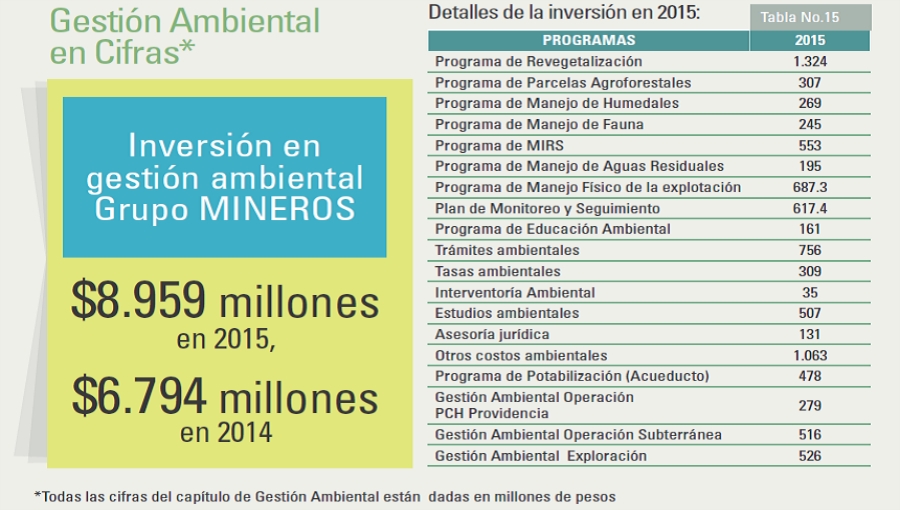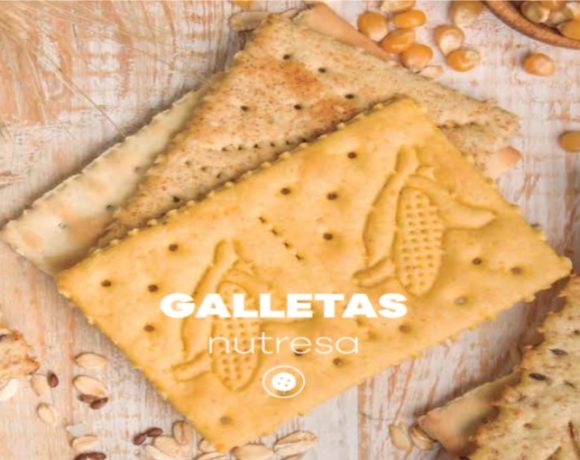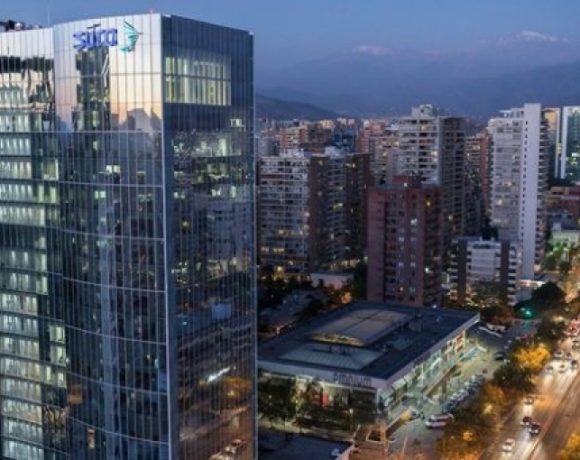Mineros SA Boosting Environmental, Social Projects: Heart of Gold

On the heels of reporting a 60% jump in profits last year, Medellin-based gold miner Minerors SA released its latest annual “sustainability” report showing that company-wide environmental spending rose to COP8.96 billion (US$2.9 million) in 2015, up from COP6.79 billion (US$2.2 million) in 2014.
The company also invested millions more in dozens of social projects benefiting communities in its key areas of operations — mostly in Antioquia, secondarily in Nicaragua. Such initiatives include agro-forestry projects, clean water projects, new schools, environmental education campaigns, university and primary-school scholarships, hydropower development, land restoration, and new turbidity-reducing technologies (aiming to reduce threats to fish) in water channels where alluvial mining takes place.
“Responsible mining indeed is possible — and we are doing it,” the company boasts in the report.
In the report, Mineros President Andrés Restrepo Isaza pointed out that the global fall in gold prices — plus the continuation of illegal mining operations (especially by violent criminals) in Colombia — pose especially difficult challenges for the legal mining industry (see “Mineros SA Full-Year 2015 Profits Jump 60% Despite Fall in Gold Prices,” Medellin Herald March 01, 2016).
But despite these challenges, “the commitment of Mineros [SA] to continue mining that is responsible with the environment and supporting quality-of-life of the populations near our operations hasn’t been altered,” Restrepo said.
What’s more, Mineros continues to win national and international awards for environmentally and socially responsible mining — the latest example being the silver award given to Mineros in 2015 by the Iberoamerican Foundation for Quality Management (Fundacion Iberoamericana para la Gestion de la Calidad), he pointed out.
Among the scores of social programs sponsored by Mineros is a new bee-raising initiative (for honey production) in 26 neighborhoods (veredas) in the towns of El Bagre, Zaragoza and Nechí (all in Antioquia), in which 97 familias are benefitting, he said.
Another sponsored project involves agro-forestry development on reclaimed lands, which in 2015 benefitted 40 families on private lots plus another 12 families operating community-owned parcels.
Also during 2015, Mineros launched a native-fish restocking project, donating 236,000 young “bocachio” fish, 60,000 young “dorada” fish, 55,700 young “cachama” fish and 3,000 young “tilapia” fish, some of these species specifically for new fish-farming projects.
“We also continued with our program of management and conservation of the River Tortoise, an endemic species in Colombia which is in danger of extinction,” Restrepo said. In all, the company liberated 2,300 of these young tortoises to riverine habitats in Mineros areas of operations.
Animal Protection, Land Restoration
Mineros not only has eliminated toxic mercury from its gold-mining operations, but also has taken new steps to improve land reclamation and to reduce water turbidity in alluvial mining, the report points out.
“During 2015, we planted about 69,000 trees of different native species in 71 hectares of land [created] by the alluvial operation of our organization,” according to the report.
“In addition, we planted about 12,000 trees of the cativo species (Prioria copaifera) in an area of 54 hectares, enabling conservation and enrichment [of the reclaimed land]. In addition, 7,000 additional trees of this valuable species were planted in agroforestry plots located in the [vereda] of Sabalito Sinai in the town of El Bagre.
“Throughout 2015, we developed with the communities in the area of influence of our operations recovery and maintenance of wetlands and marshes that are of great social, economic and environmental benefits for the region.
“We are aware of the importance of protecting wildlife and we contribute — together with the communities where we operate — to minimize our environmental footprint.
“We conduct exhaustive searches [in areas of mining operations] of vulnerable wildlife on these fronts. We then apply appropriate handling protocols for each group of vertebrates (amphibians, reptiles, birds and mammals). We employ rehabilitation (for individuals facing special conditions), and later we relocate the rescued [animals],” according to Mineros.
Lower-Impact Dredging
“In 2015, we developed for our alluvial operation two sets of pools called North System and the South System,” according to the company.
Waterborne discharge of byproduct solids produced from the alluvial mining operations go through a channel connected to the Nechí river in Antioquia, according to the company.
“Control of total suspended solids (TSS) is a priority in our operation, therefore this control is carried out in all phases including dredges, rock pools and the output channel,” according to Mineros.
“We have advanced research — supported by both national and international [technical studies] — on measures to control SST, which we have adapted to local conditions, continuously monitoring the results obtained with the proposed measures, in order to optimize or modify them as the case may be.
“In parallel, we have advanced a project instrumentation system [in the channels and in the] Nechí river to know in real time the balance of flows entering the mining operation and flowing out of it.
“This instrumentation provides us with the knowledge of the direction of flows in the system, the dynamics of water balances and the relationship between flow and SST measured in each of the areas.”
Measures implemented in the alluvial operation to control TSS include a novel “submerged download” system that directs byproduct solids to the bottom of the channel, which reduces the amount of TSS dispersion.
The company also installed new “turbidity curtains” that form a barrier against TSS dispersal. “Turbidity curtains are a floating geotextile which minimizes sediment transport of an altered or disturbed area to an area adjacent to or within a body of water area,” according to Mineros.
In addition, Mineros installed new “sediment barriers” that include “silt fences, straw or sand bags, brush piles, wooden walls and other synthetic materials” to avoid excess turbidity in the nearby river and channels, according to the report.
















